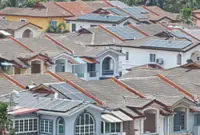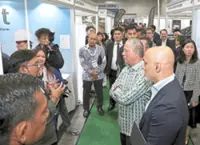Nachtwey is collaborating with researchers to test which apple varieties thrive under the solar canopy, and which types of photovoltaic roofs are best suited for the orchard. — Photo by Marek Studzinski on Unsplash
GELSDORF, Germany: It’s picking season at Christian Nachtwey’s organic orchard in western Germany and labourers are loading their carts with ripe red Elster apples, ready to be shipped to European supermarkets.
But Nachtwey’s farm is also reaping a second harvest: Many of the apple trees grow beneath solar panels that have been producing bountiful electricity during this year’s unusually sun-rich summer, while providing the fruit below with much-needed shade.





